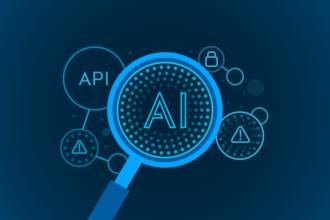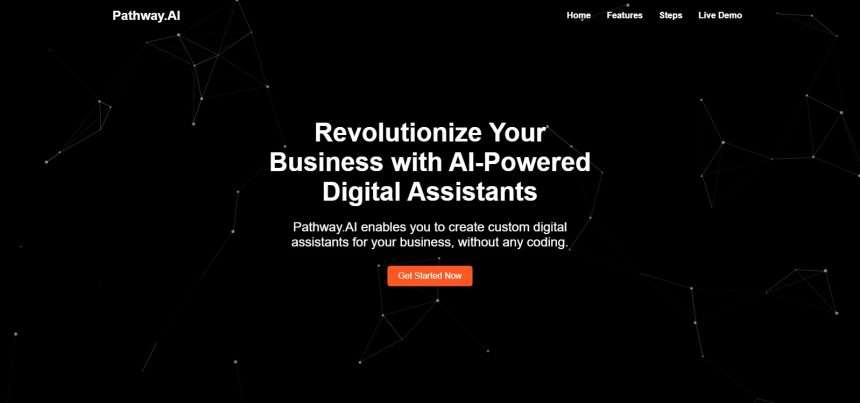What Is Pathway. Ai
A revolutionary platform called Pathway.AI enables companies to quickly create customised digital assistants without the need for coding knowledge. With Pathway.AI, you can create intelligent, interactive virtual assistants that are tailored to your particular business needs, thus realising the full potential of artificial intelligence.
With Pathway.AI, you can easily create and customise your own digital assistant whether you want to improve user experiences, automate administrative duties, or expedite customer service. With this ground-breaking approach, organisations can now fully utilise AI technology without having to learn how to code, which will eventually increase productivity, efficiency, and customer pleasure.
Key Points Table
| Key | Points |
|---|---|
| Product Name | Pathway.AI |
| Starting Price | Free |
| Free Versions | Yes Free Versions Available |
| Product Type | Ai |
| Free Trial | Available |
| API Options | Available |
| Year Founded | N/A |
| Email Support | Yes |
| Website Url | Click Here To Visit |
| Device | Type of Courses | Support Channel |
|---|---|---|
| On-Premise | AI-Powered | 24/7 Support |
| Mac | Customizable | Email Support |
| Linux | User-Friendly | |
| Chromebook | ||
| Windows | ||
| SaaS |
Pathway.AI Features List
Here are some of the amazing features offered by the AI Pathway tool;
- Pathway Suggest™ for chat and helpdesk tickets retrieves relevant responses from a team
- User-Friendly
- Simply drag and drop your data
- Customizable
Pathway Price & Information
The software offers a free plan, but you don’t have access to all of its features. There are also pro and enterprise versions available.
How Does Pathway Work?
Without requiring any coding experience, Pathway.AI makes it easier to create unique digital assistants for your company. You must first register for Pathway.AI in order to enjoy its user-friendly interface. You may start developing your digital assistant within the platform by individualising its look, voice, tone, and behaviour to fit your business identity.
Pathway.AI’s sophisticated natural language processing (NLP) features enable your digital assistant to precisely understand and interpret user requests. It can understand the purpose behind user queries and give pertinent answers or carry out actions accordingly. The platform also has integration features that let your digital assistant get information from already installed programmes and systems.
Real-time changes and seamless data retrieval are made possible through this. In order to give you more choice when communicating with your clients, Pathway.AI allows deployment across a variety of channels, including websites, mobile apps, messaging platforms, and voice assistants.
Pathway.AI uses machine learning techniques to continuously learn and adapt as consumers engage with your digital assistant, enhancing its performance over time. Businesses can easily build personalised digital assistants with Pathway.AI that improve user experiences, rework procedures, and boost productivity without the need for coding knowledge.
Who Uses Pathway ?
So who should be using Pathway tool?
- Bloggers who are struggling to create new content regularly
- Small business owners who want to create original product reviews
- YouTubers who want crispy and unique titles and descriptions for their videos
- Social media managers who want to quickly create excellent social media posts
- SEOs, affiliate marketers, and anyone who wants to write blog articles
Apps and Integrations
Unfortunately, Pathway doesn’t offer a native app for desktop or mobile devices.
You have the option to download an extension for:
- Chrome
- Firefox
- Microsoft Edge
- Opera
- Brave
You can also download add-ons for Google Docs, Word, Outlook, etc.
Some Outstanding Features Offer By Pathway Ai
No-Coding Interface
Pathway.AI offers a user-friendly, no-coding interface for creating your personal assistant. As a result, programming expertise is not required to construct a complex and knowledgeable virtual assistant.
Options for Customization
The platform enables you to design your virtual assistant to meet your unique company requirements. To match your brand identity and offer a tailored user experience, you can alter its appearance, voice, tone, and behaviour.
Pathway for Natural Language Processing (NLP)
To effectively perceive and interpret user requests and inquiries, AI makes use of sophisticated NLP skills. This guarantees that your digital assistant can interact with users successfully, understand their intentions, and give pertinent answers or carry out specified actions.
Integration Capabilities
The platform seamlessly integrates with various systems and applications, enabling your digital assistant to access and retrieve information from your existing databases, CRMs, or other software solutions. This allows for efficient data retrieval and real-time updates, enhancing the assistant’s effectiveness.
Multi-Channel Deployment
Pathway.AI supports deployment across multiple channels, such as websites, mobile apps, messaging platforms, and voice assistants. This enables you to engage with customers or users through their preferred communication channels, extending the reach of your digital assistant.
Analytics and Insights
The platform provides robust analytics and reporting features that give you valuable insights into user interactions, frequently asked questions, and user satisfaction levels. These analytics help you continually improve and optimize your digital assistant’s performance.
Continuous Learning and Adaptation
Pathway.AI employs machine learning techniques to continuously learn from user interactions and adapt its responses over time. This ensures that your digital assistant becomes smarter and more accurate in providing relevant information and support to users.
Pathway Pros Or Cons
| PROS | CONS |
|---|---|
| Accessibility: Pathway.AI’s no-coding approach makes it accessible to a wider range of users, as it eliminates the need for coding knowledge. This allows businesses of all sizes and industries to leverage the power of digital assistants without technical barriers. | Limitations in Complexity: While Pathway.AI offers customization options, there may be limitations when it comes to creating highly complex digital assistants with intricate functionalities. Businesses that require highly specialized or intricate virtual assistants may find the platform’s capabilities insufficient for their needs. |
| Customization: The platform enables businesses to create highly tailored digital assistants that align with their specific needs and brand identity. From appearance and voice to behavior and functionality, the level of customization ensures a personalized and unique user experience. | Learning Curve: Despite being a no-coding platform, there may still be a learning curve associated with mastering the interface and understanding the platform’s features. Users who are unfamiliar with building digital assistants or working with AI technologies may require some time and effort to become proficient. |
| Time and Cost Efficiency: By eliminating the requirement for coding, Pathway.AI significantly reduces the time and cost associated with developing digital assistants. Businesses can create and deploy their virtual assistant more efficiently, accelerating time-to-market and achieving cost savings. | Dependency on Pre-built Features: Pathway.AI provides pre-built features and templates to assist in creating digital assistants. However, businesses that require unique or highly specific functionalities may find themselves limited by the available options, potentially requiring workarounds or additional development. |
| Natural Language Processing: The integration of advanced NLP capabilities allows the digital assistant to understand and interpret user queries accurately. This results in more effective and seamless interactions, enhancing customer satisfaction and reducing the need for human intervention. | Reliance on Machine Learning: Pathway.AI’s continuous learning and adaptation capabilities rely on machine learning algorithms. While this enables the digital assistant to improve over time, it also means that the initial performance may not be as refined or accurate until the system has gathered enough data and learned from user interactions. |




